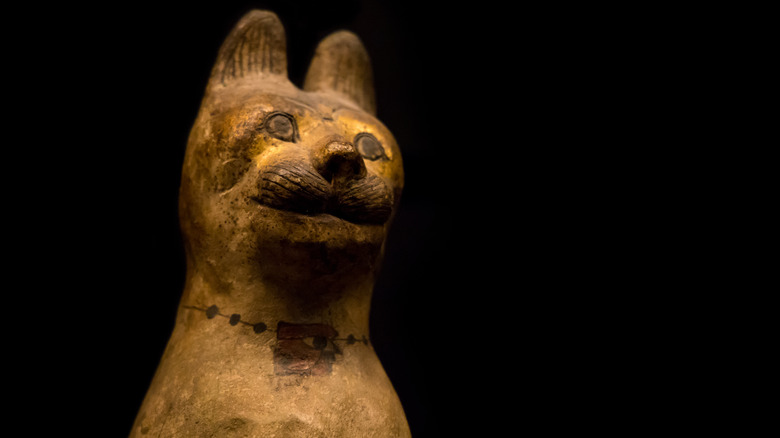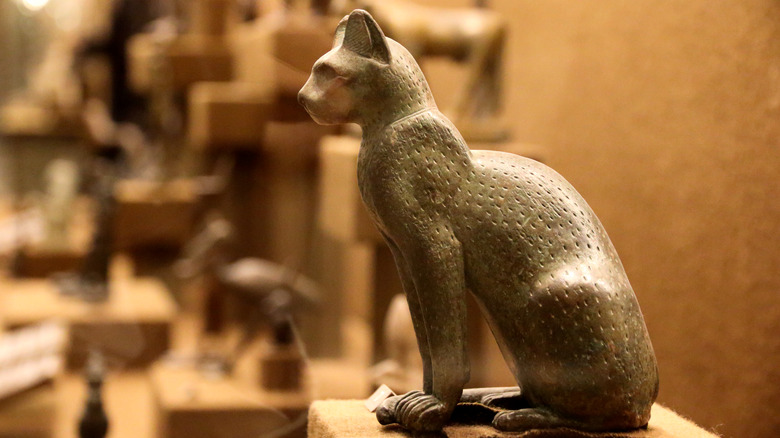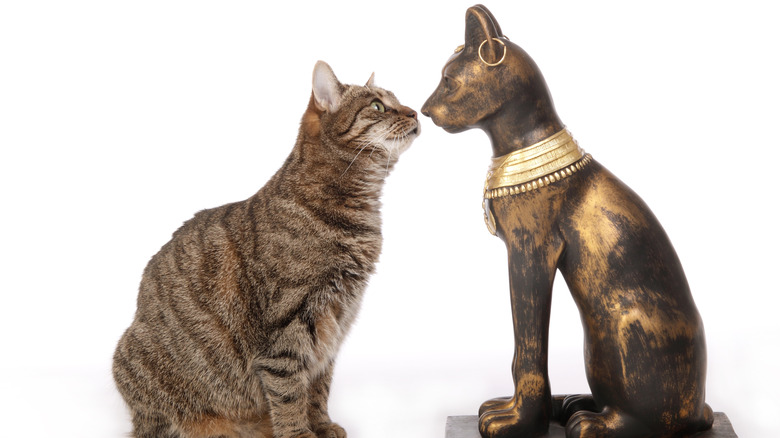What Happened If You Killed A Cat In Ancient Egypt?
Cats, infamously, can be more than a little fickle. Dogs are often desperate to heap affection upon their owners, their family members, and any other friendly humans they can get their paws or tongues on, but it's not always so with cats. Our feline friends often decide when they want to be petted and when they don't, and woe betide anybody who reads their ever-changing moods wrongly.
Nevertheless, our feline family members are just as beloved by people around the world. In March 2022, Simply Insurance reported that there were 370 million pet cats around the world. That's a lot of loving kitty-centric homes.
As a society, the Ancient Egyptians in particular have been known for their loving kitty-centric ways. They are also known for harsh treatment of criminals, tomb robbers in particular. The sentence for such thieves, according to the World History Encyclopedia, "could be as severe as amputation of the hands and nose or even death by impalement or burning." What grisly fate awaited those who cruelly killed a cat in Ancient Egypt? Also death, it seems.
The spoiled cats of Ancient Egypt
Our feline friends remain absolutely adored in the 21st century. In Ancient Egypt, however, cats were perhaps even more important than they are to us now. Per History, they had utility that they continue to have today (eradicating vermin), but they also developed a certain connection to the divine. They were often mummified in death, and are popular symbols depicted in varied and stunning examples of Ancient Egyptian art.
In March of 2021, Live Science reports, a cemetery for pets was discovered near the Red Sea. Estimated to date back around 2,000 years, the site was the final resting place for numerous cats and other animals, and they appeared to have been as respected and beloved in death as they were in life. The Polish Academy of Arts and Sciences' Marta Osypińska told that outlet that the majority of the remains "are very carefully buried. The animals are placed in a sleeping position — sometimes wrapped in a blanket, sometimes covered with dishes."
The Carnegie Museum of Natural History states that cats, if not quite literally worshiped themselves, had strong associations with the Gods that were fundamental to Ancient Egyptian society. Bastet, the goddess, appeared as a cat, and many cats were mummified in Bastet's honor. With all of this in mind, then, perhaps it's unsurprising that the killing of a cat (regardless of whether the deed was intentional or not, according to The Vintage News) carried the death penalty.
When was Ancient Egyptian cat-killing permitted?
It was illegal to harm a cat, The Vintage News goes on, but there were exceptions, and the practice was commonplace at times: the cat population at some times grew too great, and the faithful felines had to be culled. Even when this happened, though, they were reportedly honored in death and mummified.
The notion of the afterlife, as central as it was to Ancient Egyptian beliefs, meant that a dead cat was not necessarily lost. In fact, the Carnegie Museum of Natural History goes on, the owner could continue to enjoy their companionship in the next life, when they happened to die themselves. It was reportedly for this purpose that mummified cat and mummified owner would sometimes be placed together.
Nevertheless, the grief a family felt at the loss of a family pet will be a familiar feeling for anybody who has been through such an awful experience. Ancient Egyptians customarily indulged in a curious act on the death of a pet: They would reportedly shave off their eyebrows, outwardly displaying the sorrow they felt.


